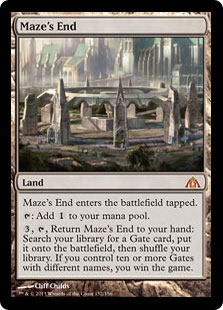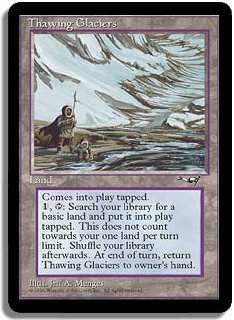Warning: Spoilers!
Dragon’s Maze spoilers?
Already?
Well, time flies when you’re having fun. It’s April, which means Dragon’s Maze drops next month. We’ve got twenty, count ’em, twenty Dragon’s Maze cards to reveal today! That is a full one-eighth of the entire set!
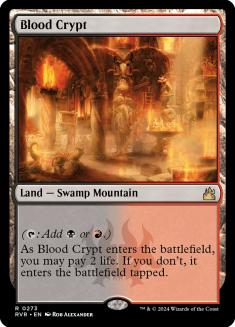
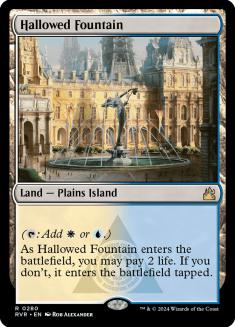
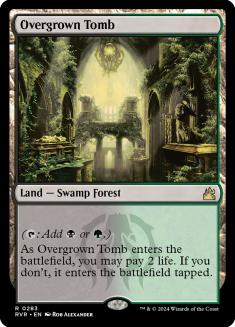
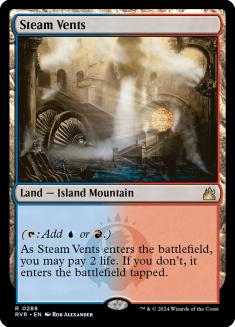
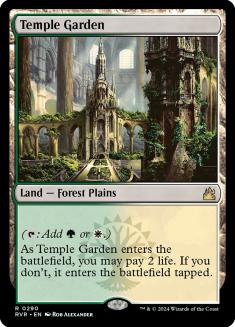
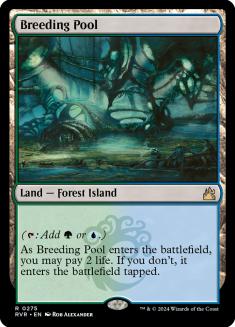
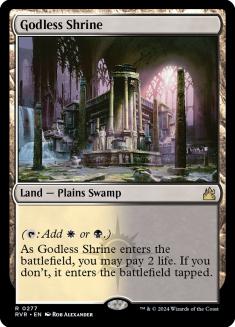
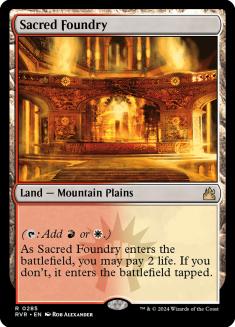
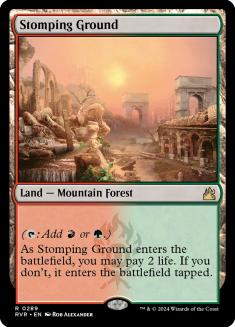
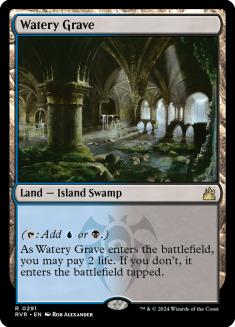
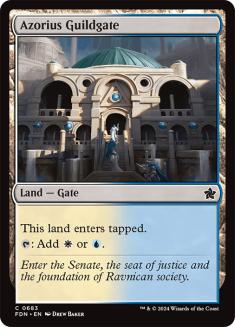
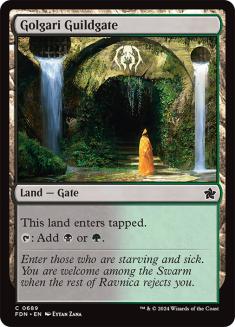
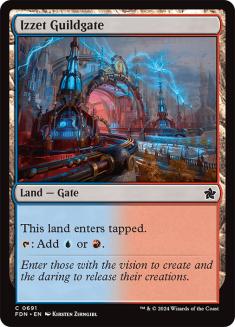
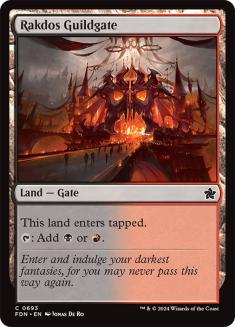
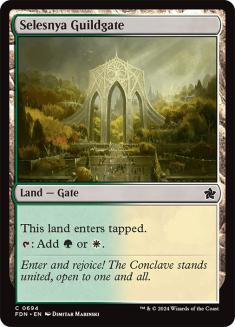
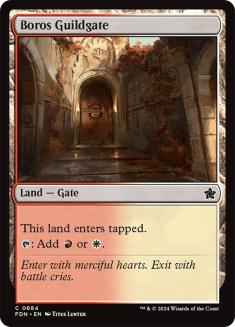
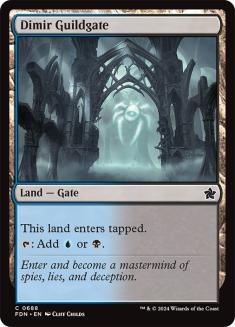
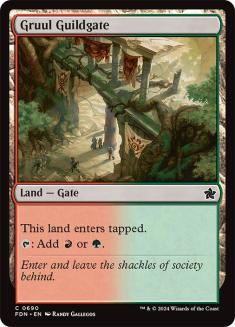
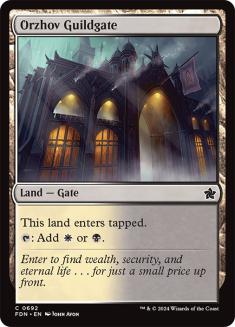
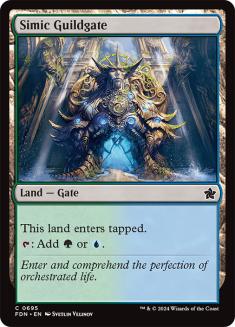
Ok, see you next week!
.
.
.
.
.
.
.
.
.
.
.
.
Just kidding! We’ve got two other cards to discuss, but seriously, the shocklands and the Guildgates are in Dragon’s Maze, if you haven’t heard. Instead of a basic land in each pack, there’s a shockland or a Guildgate (with the Guildgates being common and the shocklands being rare but not counting as the rare in the pack).
This is super cool for Draft (as we are really going to need the fixers once we try drafting Return to Ravnica and Gatecrash together). It’s also super cool for Constructed because it will make the shocklands ever more accessible to everyone.
Of course, the shocklands and Guildgates are not the only lands that have been spoiled thus far. It just wouldn’t be right if a set called “Dragon’s Maze” didn’t have an actual Maze. It’s not clear how much of the Maze appears on cards, but the End does.
Land
Maze’s End enters the battlefield tapped.
T: Add to your mana pool.
3,T, Return Maze’s End to your hand: Search your library for a Gate card, put it onto the battlefield, then shuffle your library. If you control ten or more Gates with different names, you win the game.
Maze’s End certainly has everyone talking, as it is harkens back to one of the more fun (assuming you love value as much as I do) and busted lands in the game’s history, Thawing Glaciers.
Thawing Glaciers hasn’t been legal in a very long time, and there haven’t exactly been a lot of attempts to print fixed versions, so an awful lot of readers may not be familiar with the card. Before we dig too deep into Maze’s End, let’s take a moment to review why Thawing Glaciers has such a reputation as a powerhouse. It doesn’t even make mana!
Or, OR, it makes tons of mana! It took the real world a little while to fully appreciate Thawing Glaciers back in 1996, but to be fair, the Internet was a small child back then. Think Thawing Glaciers this way:
This means we are spending one mana then two mana to draw a basic land of our choice. I say draw because even though you are getting to put it into play, it enters tapped and cost you a land drop. We don’t count this as a fourth mana, however, because when it came into play tapped, it replaced another tapped land (the Thawing Glacier).
Think Twice is a popular tournament card that lets you spend two mana then three mana to get ahead by a card. Thawing Glaciers lets you do it for almost half that cost every other turn and with basically no start-up cost (unlike Jayemdae Tome or Journeyer’s Kite).
So why didn’t people all run four? It’s somewhat like why so many didn’t run four Necropotences or four Jace, the Mind Sculptors.
“If I draw too many Thawing Glaciers, I won’t be able to use them all since I can only play one land a turn.” – Figsworth Wigglebottom
Look, diminishing returns is a real thing, no question, but sometimes WotC prints busted cards. The thing about Thawing is that you are drawing an extra card every other turn. If you draw two, you can be on Howling Mine (thinning your deck so fast that you’ll draw more spells while always having perfect mana). If you draw three? You’re already on personal Howling Mine! What more do you want?!
Anyway, Thawing Glaciers is just outrageously overpowered. A lot of cards that seemed great back in the day do not stand up to the test of time. This is not one of those cards. If Thawing Glaciers was legal, it would be completely busted in half.
So why haven’t we seen more attempts to make Thawing Glaciers like cards in the past seventeen years? The number one reason:
The Erik Lauer Experience.
What is the Erik Lauer Experience?
The Erik Lauer Experience is the process of shuffling your library over and over, turn after turn to build a very small incremental advantage. Thawing Glaciers has a very powerful effect when you still need more land. Once you have enough lands to cast all your spells, the right play is generally still to Thaw every turn, slowly slightly decreasing the probability you will draw more land in future turns.
The Erik Lauer Experience is named for the Magic designer that identified this experience and has helped push Magic away from it whenever possible.
If the Erik Lauer Experience is so bad, why is Maze’s End so exciting? Why did they even make it?
Maze’s End very cleverly avoids the Erik Lauer Experience entirely! To begin with, it costs two more to use than Thawing Glaciers, putting it back into Think Twice realms of efficiency (albeit every turn). This means there is going to be a lot less Maze’s Ends than there were Thawing Glaciers percentage-wise. There will be less people using them, they will use them less often (and later in the game), they will play less copies (since its rate is so much more modest), and finally…
… When you have all ten Gates, you WIN the game!
That means none of the Gates you are getting are 1% extra edge. They are all 10% of winning the game! That is a big deal. That actually builds the excitement, the tension, the drama each time Maze’s End is activated rather than boring everyone.
Ok, ok, so Maze’s End is potentially a good design in terms of fun. Swell. What I want to know is how good it is. Is this a Thawing Glaciers, a Journeyer’s Kite, or an Everbark Shaman?
At this point, we can be very confident that Thawing Glaciers is quite a bit too good, so it isn’t a fair bar to hold the card up to; however, we still need to find a way to gauge its power level. Often, the best way to do this is to figure out a card or cards it is like that we have a better understanding of the power of and then compare and contrast them so that we understand what change in cost goes hand in hand with what change in utility. If a card costs more but does more, it might be better, it might be worse, but at least we know the lens to look at it with. The same is true if the card costs less but does less.
To start with, it costs one then four to use Maze’s End. That is a substantial increase over the one then two model. However, it does have quite a few perks. Thawing Glaciers couldn’t actually tap for mana. This wasn’t a huge deal, as it cost so little to use; however, it did cost more than a few games. Sometimes, you just don’t have time to wait for the ice to melt.
Maze’s End is a tapped land, meaning it is not a dead card during the first three turns of the game, nor do you need spend turn 4 Thawing just to be able to play your Supreme Verdict on the following turn.
The next advantage to Maze’s End is that it returns to your hand immediately. From a design standpoint, this avoids memory issues (there were people who cheated by “forgetting” to return the Glaciers to their hand, particularly those who had been using two Glaciers and on the turn in question played a non-Glaciers land). Thawing Glaciers could be abused by tapping and untapping it repeatedly with cards like Frantic Search; however, Maze’s End’s cost is already fairly prohibitive.
Return immediately does mean that you can use a single Maze’s End every turn once you can afford the hefty mana cost. This is another reason that even in a dedicated Maze’s End deck we may want to limit the number we actually play. Of course, if we are playing ten Guildgates and some number of Maze’s Ends, that is an awful lot of tapped lands anyway.
This brings us to the next big difference between Maze’s End and Thawing Glaciers: searching up Guildgates instead of basics. Is this stronger or weaker? Once you have the Guildgates in your deck, it is definitely stronger to search them up than basics. After all, they produce more colors, and you are actually saving a mana long term, as they would have come into play tapped anyway (unlike basics).
However, in general, Guildgates are probably just a hair weaker than basic lands. You’d play them for sure if they were the only options, but there are generally no shortage of better options, like shocklands and M10 duals. Having to play some number of Guildgates is certainly paying a cost.
A lot of people are probably going to overlook the ability to play Maze’s End in decks that are less than five colors. You know, you don’t actually have to play all ten Gates and use the alternate victory condition, right? Now, you’d be giving up an important element of the card’s power, but I could easily imagine decks that might make use of Maze’s End as a long-game value card, perhaps helping enable a splash.
For instance, imagine a Return to Ravnica block U/B deck that wants to splash Sphinx’s Revelation using the following mana base:
2 Maze’s End
4 Watery Grave
4 Hallowed Fountain
1 Godless Shrine
4 Dimir Guildgate
1 Azorius Guildgate
1 Orzhov Guildgate
5 Island
5 Swamp
Yes, we can’t search up more than half a dozen lands (minus however mana we draw), but we aren’t really relying on Maze’s End as our primary card draw engine. It is just another option that can grant us a little edge when we have the mana lying around. That it can also fix our mana is a nice bonus. Once we start from that mana base, we could easily consider a mana base like:
3 Maze’s End
4 Watery Grave
3 Hallowed Fountain
1 Godless Shrine
3 Dimir Guildgate
1 Azorius Guildgate
1 Orzhov Guildgate
1 Gruul Guildgate
5 Island
5 Swamp
Gruul Guildgate? No idea what we’d want to splash out of the sideboard, but if we wanted access to it, it’s within reach. It is certainly not only blue decks that might take advantage of this, either. Any slow, midrangey deck could consider it. The key to keep in mind, however, is that using a land that always comes into play tapped and only produces colorless is not a trivial price to pay. You have to be sure you really want to be sitting around doing this and that it will increase your chances of winning enough to justify how much easier it would have been to just use a basic land in this slot.
Maze’s End can potentially be used purely as a mana fixer/value card, but where it gets really exciting is when it is used as a victory condition. Using all ten Guildgates in your deck is also pretty far from trivial, but if you can afford that cost, you know have some pretty good inevitability against slow decks. If you are in a standoff or the game has stalled out, it isn’t actually a ten-turn clock. However, the many Guildgates you have already played reduces the clock by one each. It is very possible that by the time the game stalls out, you might only have to activate Maze’s End five more times to win the game outright. It also means that in some games going long, you might actually draw most or all of your Guildgates and that drawing Maze’s End is “Suspend—1 Win the game.”
What might a Maze’s End mana base look like? Here is a possible Standard mana base.
4 Chromatic Lantern
2 Maze’s End
1 Izzet Guildgate
1 Azorius Guildgate
1 Selesnya Guildgate
1 Golgari Guildgate
1 Rakdos Guildgate
1 Dimir Guildgate
1 Simic Guildgate
1 Gruul Guildgate
1 Boros Guildgate
1 Orzhov Guildgate
2 Glacial Fortress
1 Hallowed Fountain
2 Steam Vents
2 Sacred Foundry
4 Island
3 Plains
Obviously, this is wildly speculative since who knows what sorts of spells we want to play. One thing that is clear from sketching this sort of a mana base is that we are going to have to put a lot into regaining some of the massive tempo loss we are starting with. Twelve tapped lands plus a few strings on some of our other lands? We are going to be play a lot of tapped land, and unlike the Vivid land + Reflecting Pool days, playing all these tapped lands doesn’t actually ensure perfect mana.
While this mana base is going to be fairly reliable as far as casting your spells eventually, we have to be getting some pretty good value out of all five colors to justify the cost. Gaining Maze’s End as a victory condition is nowhere near enough. Even using only four colors means playing four more tapped lands instead of basics to gain a super slow, corner-case victory condition that can be easily beaten by people that want to, at least in Standard.
For instance, what is to stop someone from playing a couple Ghost Quarters in their deck? They may want to Ghost Quarter the Maze’s End to fight it as a card drawer, but if they are really concerned about it as a victory condition, they can Ghost Quarter Rakdos Guildgate (or whichever they are most confident you don’t have a duplicate of).
Nephalia Drownyard is another natural foil to Maze’s End. Not only does milling a single Guildgate likely disrupt it as a victory condition while leaving one less land to search up, it is also a counter victory condition that has historically been good against the sort of slow, incremental decks that might consider Maze’s End.
That safety mechanisms exist suggests that Maze’s End won’t completely take over Standard (at least while they are still legal), but it doesn’t mean Maze’s End couldn’t be a valuable tool for niche decks. Additionally, who knows what the Block format looks like?
Verdict: Exactly what the degenerates among us want to do with a decent rate and certainly worth experimenting with, though most people that do build around it will do so with hopelessly slow decks. Not a super high probability of being a cornerstone of tier 1 Standard (at least pre-rotation), but I’ll be damned if I don’t try.
Eternal Format Bonus: Is there any chance that some kind of a Manabond / Exploration / Life from the Loam deck uses Maze’s End as a kill card in Legacy? It is certainly not that hard to destroy nonbasics, but Life from the Loam beats that eventually. Even if you have all ten Guildgates in play, you can still activate Maze’s End and just win on the spot (assuming its untapped).
Hell, you could even play Amulet of Vigor, turning all of your Guildgates and Mazes into untapped lands. In fact, if you have Exploration, you can actually activate a Maze’s End multiple times a turn. If you ever get a second Amulet of Vigor in play, you can actually turn all of your tapped lands into mana accelerators!
The spoilers of the day are not all land. Our first Maze’s End fatty has been unveiled, and he’s a doozy:
Legendary Creature – Ogre Warrior
Vigilance, reach
Ruric Thar, the Unbowed attacks each turn if able.
Whenever a player casts a noncreature spell, Ruric Thar deals six damage to that player.
6/6
While I generally wouldn’t pay five for a 6/6 creature with vigilance, reach, and must attack, I would jump at a chance to pay four. So why pay six?
Here’s a question for you:
How many shots to the dome does it take to make Ruric Thar worth it? Well, considering they hit for six per, I’d say one. In general, a single Ruric Thar trigger and you have already made a profit. A big profit. That body is worth more than a card and four mana.
What if they just kill him?
With what?
A removal spell?
So, six damage then, eh?
If you just threw this guy into the mix without the format adapting at all, he would be a total monster. He has a body that takes over most games and is very difficult to kill without losing a lot of value. Then, you have to factor in that they aren’t always going to have the kill spell. In spots like that, they are likely going to be nearly unable to play any kind of a noncreature game at all. They can’t exactly Think Twice looking for answers, can they?
That he must attack is going to be the only realistic game plan in some games since a reasonable amount of the time he is just going to lock people out of being able to play noncreature spells. In spots like that, the hope is to be able to play enough creatures eventually to be able to gang block him and restore balance to the game. Of course, he is also the same colors as Ghor-Clan Rampager, so good luck with that…
Given his propensity for attacking and his pushing the game in a creature-centric direction, deathtouch is a logical way to try to fight him. Here are the remotely playable deathtouch creatures in Standard at the moment:
Acidic Slime
Ambush Viper
Bitterheart Witch
Deadly Recluse
Diregraf Captain
Harvester of Souls
Nightshade Peddler
Ogre Slumlord’s Rats
Sluiceway Scorpion
Thrill-Kill Assassin
Typhoid Rats
Vampire Nighthawk
Wasteland Viper
With Vault of the Archangel and Golgari Keyrune probably deserving to count, we actually have more than a few decent options. Ambush Viper in particular is cute, as you can surprise them with it as a removal spell. Acidic Slime and Vampire Nighthawk probably gain a bit of utility in random decks (which they were already a relatively common tool in). The Nightshade Peddler / Izzet Staticaster decks gain a little boost from the increase in value of deathtouch; however, they are often the sorts of decks that don’t really care if Ruric Thar is in play (it does slow down their ability to dig through their deck, but taking six to play an Unburial Rites is a small price to pay).
That Ruric Thar is a legend means cards like Evil Twin are also fine options, and while it seems like there are a fair number of ways to fight him, we’ll need them. This guy has such a big impact on the game that deckbuilding is going to have to evolve.
That he is a legend also means there are going to be some pretty troll-y Commander decks built using him as a general. It is not just to be annoying, of course. Some number of games are going to break down into a strange dilemma where there are two players that have already taken eighteen damage from Ruric Thar (perhaps each killing it three times) and each have a removal spell, but if they play it, they die and the other non-Ruric Thar player wins. However, if neither of them plays it, the Ruric Thar player ends up winning.
This seems so abusive of the commander rule and troll-ish that I wonder how long the Commander community will find it amusing. Nevertheless, it will make waves and certainly be at the heart of a number of discussions and play sessions.
As for Constructed, he costs six and isn’t a bomb against everyone, so he probably isn’t an Inferno Titan type of card, but he is the biggest, baddest Gaddock Teeg / Linvala in a while and like them will be a popular tournament card. His strength is definitely going to vary from week to week as people decide if they want to be set up to fight him or not. But many weeks, he will be a very strong metagame call, and he is always at least a 6/6 for six with upside.
What do you think of Maze’s End and Ruric Thar, the Unbowed? What existing decks in Standard might use them? Any chance either of them might show up in Modern? What kind of a card does Standard really need to appear in Dragon’s Maze?
See you next week!
Patrick Chapin
“The Innovator”

